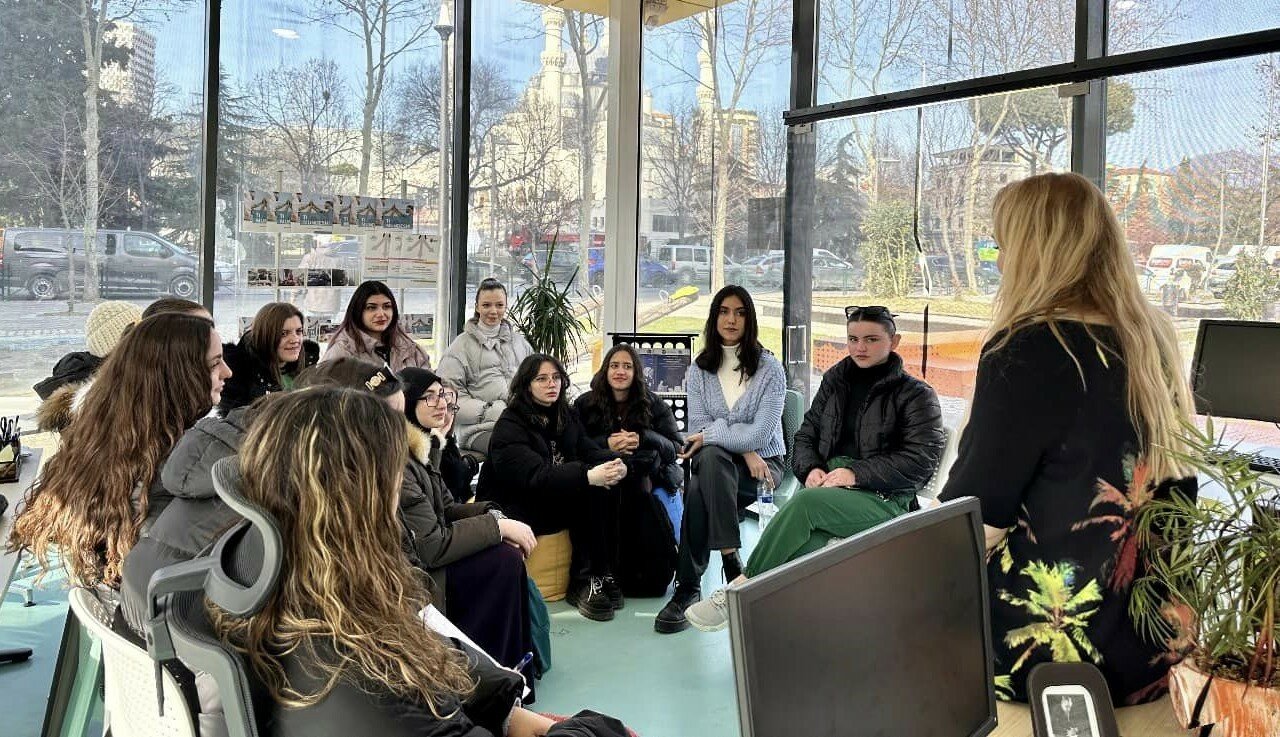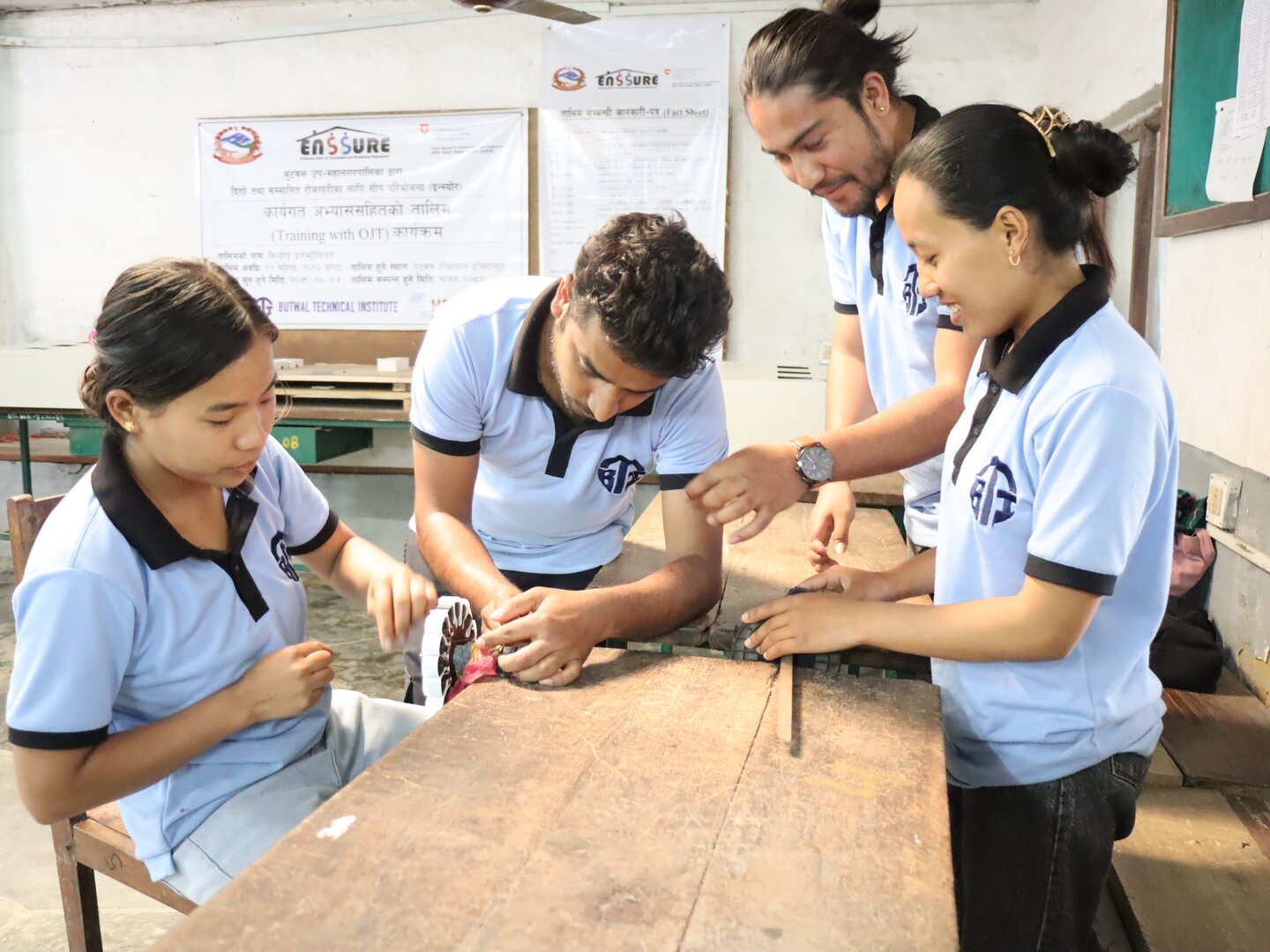In today's rapidly changing world, it is essential to equip youth with skills and knowledge that will allow them to pursue a promising career path. Making sound career decisions is crucial to ensuring decent youth employment. Below, we explore the importance of making informed career choices through the lens of three successful career guidance models applied in Albania, North Macedonia and Nepal.
Why do we care about youth and jobs?
As a society, we must ensure that we leave no one behind. This is the central, transformative promise of the 2030 Agenda for Sustainable Development.
2023 marks the European Year of Skills. One of the main reasons for youth unemployment is the lack of information about labor market needs. This leads many young people to choose the wrong career path, resulting in a skills mismatch between their qualifications and the labor market demands. This situation can be addressed by providing young people and their parents with information about the labor market and helping them make informed career choices.
Three successful models for connecting youth to jobs
Helvetas-implemented projects in Albania, North Macedonia and Nepal employ an inclusive and systemic skills development approach to promote youth employment. Through three successful models, Helvetas demonstrates how projects can work with and for young people to increase their employability and achieve decent youth employment in a sustainable way.
Model 1: Advocating for Local Career Guidance Services
The first model, developed by RisiAlbania, a project of the Swiss Agency for Development and Cooperation (SDC) implemented by Helvetas, focuses on youth-led advocacy that promotes the delivery of career guidance services by municipalities. Career guidance is a process that helps individuals understand their strengths, interests and values, and how they relate to the world of work.
The youth unemployment rate in Albania is around 20%, and there is only limited and fragmented understanding of the concept of career guidance within Albania. Helvetas’ project focuses on strengthening career guidance delivery, employing a holistic approach to work with the entire ecosystem to provide effective career guidance services. This involves supporting various system actors, such as municipalities, universities and private intermediaries, as well as persons serving in key roles like career content development and career advisors.
The first community career center managed by a municipality was established in Tirana, the capital of the country, and has been operational since December 2020. In 2021-2022, the project engaged youth organizations in a youth-led advocacy campaign that has contributed to scaling community career guidance services to other municipalities in the country. Fifteen out of 61 municipalities have expressed interest in establishing career guidance services for youth, three of which have already committed the required resources and commenced the process.
Joniada Hito, who leads the municipal career office in Tirana, said, “Every hour young women and men spend working in the wrong job is a loss to them and the economy.” Joniada says she is happy that so many other municipalities in Albania are showing interest in following the lead of the biggest municipality in the country.

Model 2: Reaching Graduates through Digital Career Fairs
The second model uses a digital career fair to inspire and inform young people from North Macedonia about the various vocational education and training (VET) opportunities available to them. The event was supported by Education for Employment, an SDC project implemented by Helvetas in North Macedonia.
The digital fair highlighted numerous occupations that are extremely in demand in the labor market and hosted open discussions on topics related to future career choices. It also emphasized the advantages of making VET a career choice, through which the student gets the opportunity for practical training in a company and support from trained mentors in companies. Video sessions helped familiarize attendees with the educational programs of several secondary VET schools, and included personal success stories from students who chose VET as a career pathway and have since become successful electrical technicians, cooks and mechatronics professionals.
The fair was designed in a fun and interactive format that connected ninth graders on the cusp of completing their primary education to key information about secondary vocational education. This model, alongside other interventions such as the national campaign “Learn Smartly, Work Professionally,” contributed to a higher enrolment rate in VET schools, especially in the dual VET classes. In the 2020/2021 school year, 98 students enrolled in 11 dual VET classes offered by 8 VET schools and 16 companies. The following year, the number increased to 2,763 students enrolled in 225 dual VET classes offered by 61 VET schools and 450 companies.
Model 3: Strengthening Education-Employment Linkages
In Nepal, career guidance is particularly important for young people and returnee migrants, who often face significant barriers to accessing decent employment, such as lack of information and insufficient skills. Through Enhanced Skills for Sustainable and Rewarding Employment (ENSSURE), another SDC project, Helvetas Nepal supports potential Nepalese youth migrant workers with vocational skills training and returnee migrant workers with further training to reintegrate them into the labor market.
The cornerstones of ENSSURE’s career guidance approach are a dual-VET apprenticeship, on-the-job training, and upskilling current employees. To date, 3,097 youth have graduated from the program, with 64% securing employment. Of the total employed graduates, 84% earn more than the minimum wage.
This model strengthens the education-employment linkage, bringing the public and private sectors together to identify the skills needed for the labor market. Historically, the TVET system in Nepal has been anchored in an institution-based approach. The government of Nepal, through ENSSURE, is now using this model of skills development interventions to unite stakeholders at the provincial and local levels, progressing the new federal system of governance.
As a technical assistance provider for the ENSSURE project, Helvetas Nepal works closely with all spheres of government to perform their roles and responsibilities related to the TVET sector. Support is provided for intergovernmental collaboration, labor and employment policy development, and the creation of strategic documents (e.g., monitoring guidelines and procedural guidance for each of the intervention components). Helvetas also assists with provincial and local governments’ planning processes, ensuring that support for migrants and skills development is integrated into long-term commitments and receives appropriate resource allocation.

Adapting global good practices to local contexts
These three models were inspired by similar ones that existed as good practices in another context but were tailored to the country contexts of Albania, North Macedonia and Nepal. For instance, the digital VET fair in North Macedonia was inspired by the Job and Vocational Training Fair BAM in Switzerland and the World Innovation Summit for Education in Doha. Helvetas modified this international best practice to the local context by making it virtual and involving young people in all stages of the intervention management cycle. By including young people in the process, the fair was able to better meet their needs and preferences, making it more accessible and effective.
In Albania, the model of a community career center was inspired by the Swiss model and tailored to an Albanian context. Following the success of the first community center, youth organizations supported by the project developed a youth-led advocacy campaign that promoted the importance of career guidance services within local governments. Twenty-six youth civil society organizations and coalitions were engaged in nine municipalities and achieved an increased awareness on the needs and benefits of career service among young adults and municipalities. More than 1,300 young adults were reached through meetings and information sessions, and around 16,000 people were reached through the Facebook page of the national advocacy campaign and through the respective Facebook pages of youth groups.
The Nepal model is also based on global experience, particularly Switzerland and Germany’s approach to dual-VET. The European Union model of creating youth panels at the local level and a Youth Sounding Board at the national level has also been integrated into Nepal’s governance processes. Youth panels are inclusive youth groups formed at the local level to bring the voice and participation of youth into local governance. These panels then advocate for youth employment and youth-led enterprise with local governments.
Key learnings
When it comes to finding the right career path, guidance can make a significant difference in a person's life. Our extensive, varied experiences in different country contexts have produced a few key learnings:
- Youth benefit most when they are involved in all stages of the intervention management cycle—from design to evaluation.
- Digitalization is a fantastic way to reach youth, and it’s cost-effective.
- Systemic constraints require systemic solutions.
- Identify the success factors of international best practices and use them as inspiration for similar practices in your context.
Engage with us at the Global Youth Economic Opportunity Summit
Interested in learning more about our experiences with these models? Helvetas will be leading a discussion on this topic on May 18, 2023, at the Global Youth Economic Opportunity Summit. Learn more about our session here.
About the Authors
Katharina Walker, Nadire Selimi, Ermira Shyti and Sabin Selimi support Helvetas’ programs in Eastern and Southeastern Europe. Aagya Pokharel supports Helvetas’ programs in Nepal.


